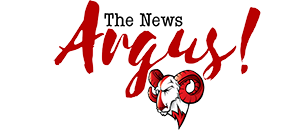
ST. LOUIS
Mark Reinking is an assistant professor of physical therapy at St. Louis University, so he knows a thing or two about exercise. But even he’s baffled by some of the things he sees people do at the gym. Not only are they putting themselves at risk for injury but Reinking can’t figure out the intended purpose of some of the exercises.
Listed below are six of the most common risky exercises that he and Heidi Prather, associate professor of physical medicine and rehabilitation at Washington University, see people doing all the time. They and Jason Barbour, personal training director at St. Louis Fitness Factory in downtown St. Louis, have also provided safe alternatives. Some of these moves can be done safely under the guidance of an expert, but they pose risks for those who haven’t been properly trained.
TOE TOUCHES
The goal: Stretch the hamstrings.
Why it’s bad: It stresses the lower back and lumbar spine. It also doesn’t effectively stretch the hamstring, and if you have short hamstrings, you’re using other joints that you shouldn’t be using to accomplish the motion. Rotating the torso toward one leg or the other is even more risky.
Safe alternatives: Try standing near a flight of stairs or other sturdy object and put the foot of the leg you want stretched on a step. Keeping the spine neutral, bend at the hip rather than the lower back, lowering your chest slowly toward your knee.
DOUBLE LEG LIFTS
The goal: To strengthen abdominal muscles.
Why it’s bad: Reinking says you can do this exercise correctly if you have really strong abdominal muscles that allow you to press your lower back into the floor. But most people don’t, which causes them to arch their lower back, putting it in a hyper-extended position.
Safe alternative: Lie on your belly, lift yourself up on your toes and forearms and hold that position for several seconds. Make sure your spine is in the neutral position, so that your belly isn’t swayed and your back and rear end aren’t arched and sticking up.
LAT PULLDOWN BEHIND NECK
The goal: To build up your shoulder and back muscles.
Why it’s bad: It puts a heavy load on the discs and muscles in the neck and upper back. Do it long enough, and Reinking says you’ll develop neck pain. Safe alternative: Pull the bar down in front of your chest. THE PLOW
The goal: It’s a yoga move designed to stretch the lower back.
Why it’s bad: It puts the neck under a lot of stress. Safe alternative: Barbour recommends lying on your back and curling your knees up to your chest instead.
SIT-UPS WITH HANDS BEHIND HEAD
The goal: Strengthen abdominal muscles
Why it’s bad: Clasping your hands behind your head puts stress on the neck. Doing sit-ups with your legs flat on the floor and sitting all the way up until your chest touches your legs is also bad because it puts stress on the lower back.
Safe alternative: Try a crunch: Cross your arms over your chest, bend your knees and keep your head and shoulders in the neutral position. Lift your upper body until it’s just off the ground.
DEAD LIFTS
The goal: It’s a total body lift that strengthens all muscle groups.
Why it’s bad: It’s often done by picking the barbell up from the floor with the back rounded, the legs straight and too much weight on the barbell, which can cause your lumbar spine to buckle, leading to disk injury.
Safe alternative: Starting out with a manageable amount of weight, lift the barbell by bending your knees, keeping your back straight and looking straight ahead at a wall. Barbour strongly recommends doing this under the tutelage of a trained exercise professional who can tweak your form to perfection.
